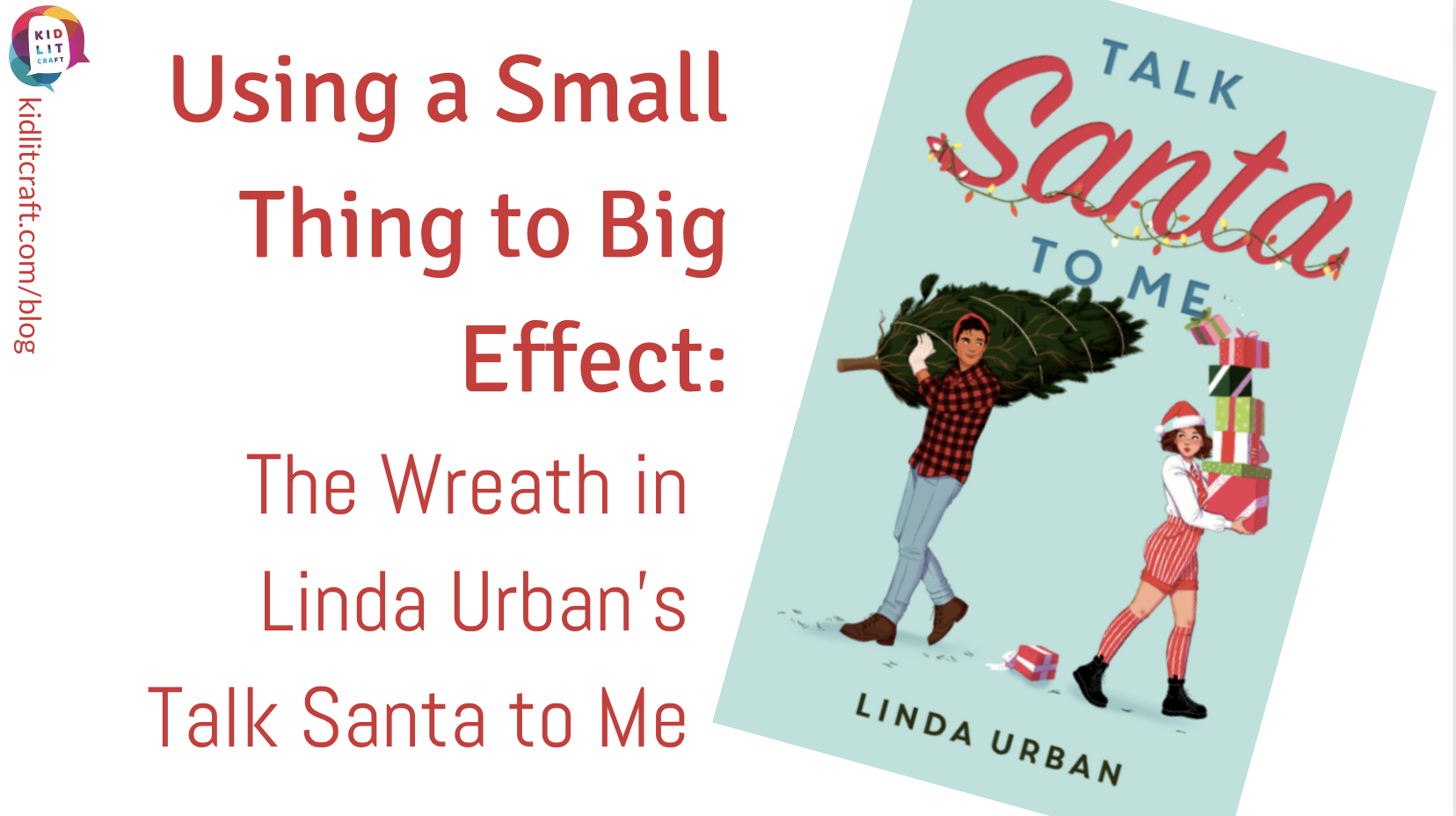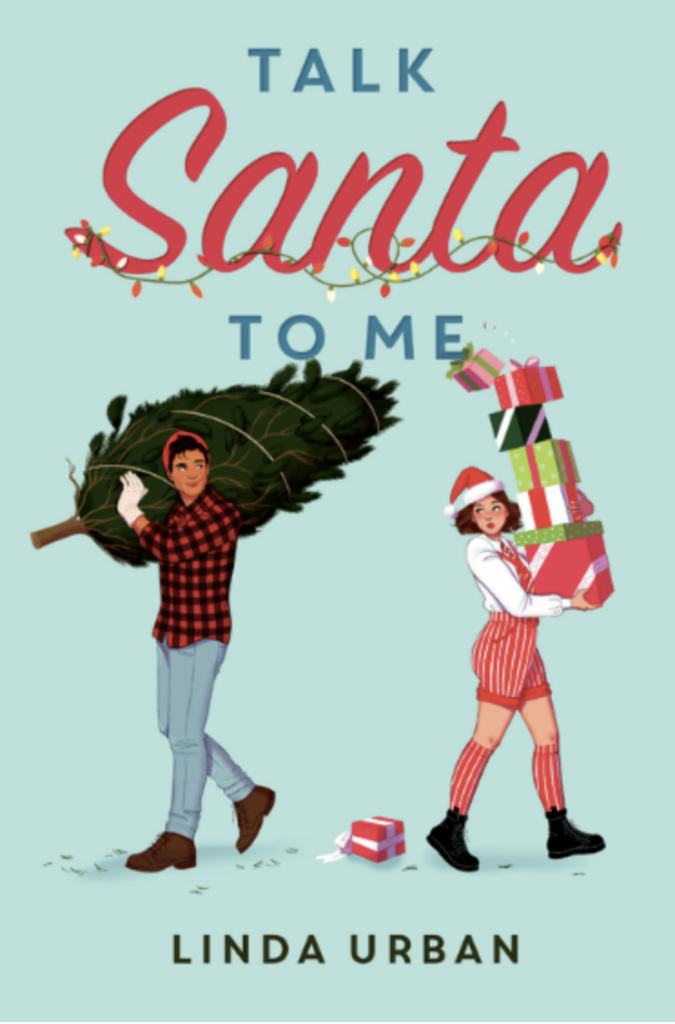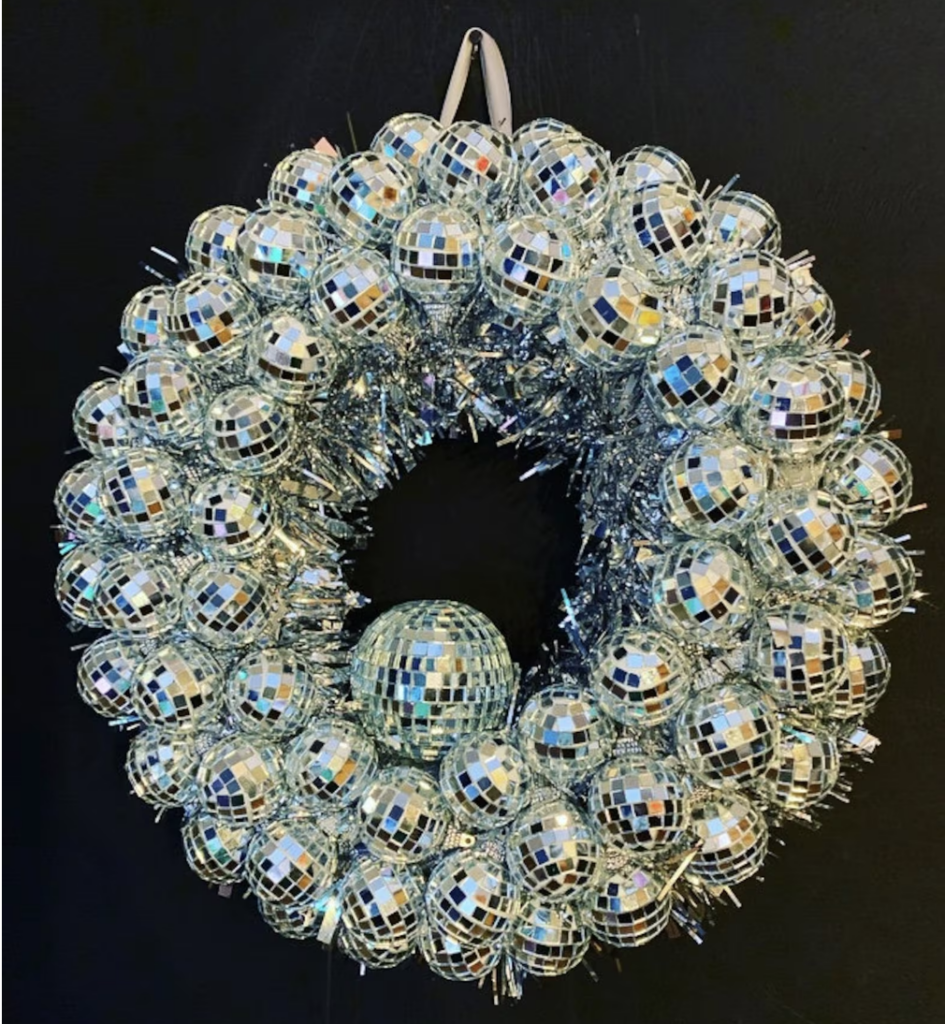craft review by Erin Nuttall
Linda Urban’s stories are studded with angst, anguish, and hope, as well as problems, pathos, and humor. She is stellar at structuring stories so that something small, seemingly insignificant, becomes the integral to the climax and the protagonist’s understanding of the situation. In Talk Santa To Me, surprisingly, it’s a gaudy silver Christmas wreath that takes this hefty role.
The Wreath in Context
Fifteen-year-old Francine is facing a lot of changes: she’ll be driving soon, her beloved Grandpa Chris recently died, her relationship with her BFF is tricky now that they go to different high schools, the boys at her school are teasing her about her terrible first kiss, she might have a crush on a cute and kind boy, and Francie’s not sure how she feels about her faith. Worst of all, after Grandpa’s death, are the changes Aunt Carole introduces to the North Pole.
Francie’s family owns & runs The North Pole, a holiday shop & Santa extravaganza. After Grandpa Chris’s unexpected death the year before, Aunt Carole moves back to help with the family business. Her brusque style and many improvement ideas instantly make Aunt Carole Francine’s arch-nemesis–someone out to destroy everything Francie holds dear.
Aunt Carole has hired an annoying intern, introduced a point system for employees, declared that Francie must try out and report back on all the new uniform possibilities, made her answer the letters to Santa, hung up a new wreath, and is plotting to replace the current Santa–Francie’s dad–with a slick new Santa.
It seems that the new wreath is the least of Francie’s worries and Urban milks it for comedy gold throughout the book starting with its introduction.
The Wreath as Comedy
For as long as I can remember, the North Pole has been tastefully decorated . . . but this year, after a significant argument, Aunt Carole convinced Dad to let her . . . replace the artificial boxwood [front door wreath] with a massive modern silver job, barnacled with mirrored bulbs and chunky crystals . . . . It looks like somebody hot glued a snow tire with rhinestones and foil wrapped potatoes. (25)
Urban’s vivid description of the wreath shows Francie’s disdain. She uses both alliteration (massive, modern, mirrored; barnacled, bulbs; chunky crystals; silver, somebody, snow) and unexpectedly pits opposing ideas against each other (barnacled vs mirrored; hot glue and a snow tire vs rhinestones; and crystals and rhinestones vs potatoes) to hilariously emphasize the truly horribleness of the wreath and to portray Aunt Carole’s utter incompetence and poor taste.
The Wreath as Character Development Tool
The wreath is not brought up again for a hundred pages or so when it is again used to comedically skewer Aunt Carole when she becomes embroiled in a public wreath battle via letters to the editor in the local paper. It begins with complaints about the wreath.
As it turns out, I am not the only person in Hollydale offended by the shiny silver wreath Aunt Carole insisted on. . . . [T]he wreath’s shiny silver surface has been catching the headlights of passing cars. . . . . The disco wreath, as one of the two Hollydale Daily letter-to-the-editor, writes calls it, is not only “ugly” and “an affront” and “all that is wrong with liberal America,” but, says this concerned citizen, could under the right conditions, become a driving hazard. ‘Pointy death rays of light’ might temporarily blind a passing motorist, says the letter, and result in tragedy. (128-9)
This complaint description is followed thirty pages later by Francie’s description of Aunt Carole’s response:
It includes the words unsophisticated, stuck in the past, and wouldn’t know good taste if it crashed into her Dodge Durango. Claims are also made about the sorts of wreathes one sees in chic European towns like Paris, Amsterdam, Amsterdam, and . . . Frankfurter. (158)
Francie, and the reader, can immediately see that not only does Aunt Carole have poor taste in wreaths, but also her high horse reply is undermined by her referring to “Frankfurter” rather than Frankfurt the city. It’s made even funnier by the fact that before publishing the letter the editor calls to talk to Aunt Carole about it but she rudely refuses to recognize her mistake and the editor retaliates.
…there is another short complaint about the disco wreath [in the Hollydale Daily]. The words newfangled and flashy and the phrase Vanity versus public security are used. Just below it is an editorial cartoon featuring a holiday wreath made entirely of sparkly silver hot dogs. ‘Christmas in Frankfurter,’ it says in the caption. (161)
The public tit-for-tat nature of the newspaper spats helps Francie feel justified in her feelings about the ugliness of the wreath and Aunt Carole’s inherent inability to run the North Pole especially when Aunt Carole embarrasses herself with the Frankfurter comment. Ahh, the joy of schadenfreude.
The Wreath as Crucial Plot Element
Spread lightly throughout the story the wreath seems unimportant. It’s a joke treated almost as a one-off, until it’s the most important thing in the story.
. . . an SUV slides, then spins . . . its headlights aimed perfectly at Aunt Carole’s enormous disco wreath. . . . Before [we] can react, the windshield is pierced by a thousand blinding pinpricks of light. . . . the truck skids and slides, swerving into the right lane and then back again before smacking hard against the curb. Whomp goes the car. (250)
Francine’s hatred of the wreath is proven right when she and her cute crush, Hector, get into a car crash because of it. That crash is the undoing of her plan to save the day and the North Pole. Ahh, the pain of irony.
The Wreath In Total
Urban masterfully uses the wreath is for comedy, as part of Francie’s war against her Aunt Carole, and as a symbol of all the changes that Francie is fighting. Each scene is individually funny and they build on each other until the hilarious and high-octane climax when all the waxing potential of the wreath is beautifully, hysterically, wonderfully tied together.
Now It’s Your Turn:
- Is there a person, an object, a joke (or all three?) that you can scatter through the build up and have it clinch the climax?
- Can you pump up the humor an object by alliteration and/or opposing ideas?
- Can you poke your villain and your protagonist using shadenfruede or irony?
- When choosing an object to be integral to the climax of the story, consider ways you can make it meaningful in each moment so it feels like the object has already done it’s job. Then, when it shows up in the climax, your reader will be satisfyingly surprised.
In case you missed it, check out Erin’s Q&A with Linda Urban:
For more on using objects in your story, check out this post!
Erin Nuttall holds an MFA in Writing for Children and Young Adults from Vermont College of Fine Arts and is an active member of SCBWI and ALAN. She lives outside of Chicago with her family where she writes stories for middle grade and young adult readers that offer a humorous take on friendship, identity, feminism, and romance.




COMMENTs:
0